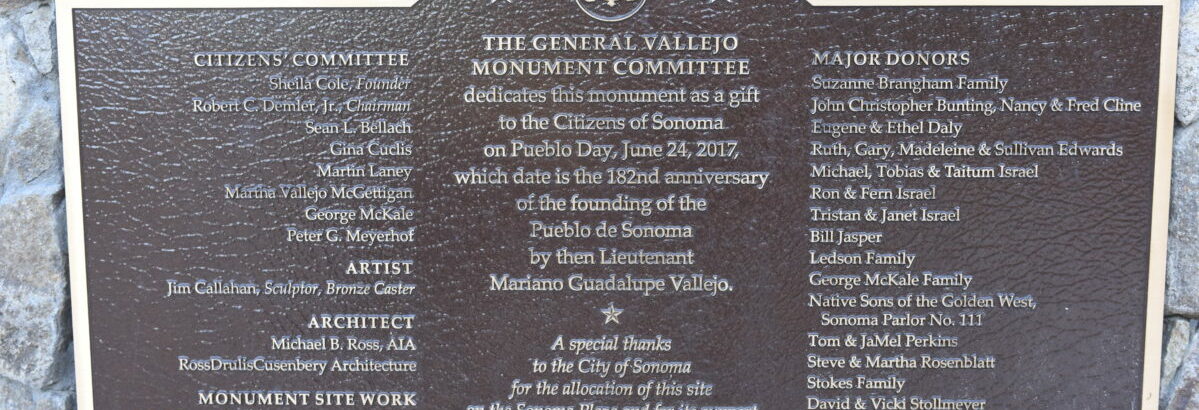There has been no subsequent police inquiry or public call for a search-and-rescue effort, but shortly after the first hour of the August 19 City Council meeting a mysterious portal may have opened behind the dais upon which the Sonoma City Council members sit, and a force or a spell or a bewitchment of some sort may have emerged from some subterranean space, or perhaps it came from a parallel universe infected by an absence of logic, or maybe it was simply the result of the aggregated and exhausting anxiety from enduring two years, 217 days, and however many hours of affront to human decency, rule of law, and truth from a president named Trump. Who knows? What ever the cause, some mysterious, perhaps dark energy (Voldemort?) seems to have abducted the common sense, sound logic, and collective wisdom of four members of that august body that had just minutes earlier agreed in perfect harmony and unanimous sympathy to adopt a resolution supporting the disbanding of internment camps for asylum-seeking refugees.
Shortly after that enlightened vote, the council took up the discussion about whether or not the Sonoma-Penglai Sister City Committee could proceed with a fundraising campaign that had already raised $36,000 by selling commemorative bricks to thousand-dollar donors to help fund the construction of a Chinese-style pavilion – called a “Ting” – which, it is hoped, will honor the Chinese immigrants who helped build this town, plant its grapes, excavate its winery caves, build its roads and wash its laundry.
At one time, we are told, as much as 25 percent of Sonoma’s population was Chinese. The 2010 U.S. census shows the “Asian” population now is about 2.6 percent, but doesn’t specify nationalities. History has not been kind to the Chinese legacy in Sonoma (remember the Chinese Exclusion Act?), it is all but invisible, and the hope of the Sister City Committee, which is paired with the Chinese city of Penglai, home to the burgeoning Chinese wine industry (Chateau Lafite Rothschild recently launched its first Chinese vintage in Penglai) is that the Sonoma Ting will initiate greater understanding of the injustice committed against Chinese immigrants, appreciation for the Chinese laborers who helped build Sonoma, and a commitment to strengthening citizen ties with the wine-loving people of China.
Hence the plan to replace the long-dead Depot Park pavilion with the Ting, priced at something over $125,000, all from community donations, with some funds given in exchange for bricks bearing the donors names, similar to the brick walkway outside Andrews Hall at the Sonoma Community Center.
This, one would think, is the easiest slam dunk, or at least a perfect screen for Steph Curry to bury a three.???? Who could possibly object? Put a shine on some citizen diplomacy. Raise awareness of a historic injustice. Let private citizens bear all the cost and maintenance in perpetuity. Give donors a little bit of public recognition for making it all happen. Who, I repeat, could possibly object?
Perhaps only four people in all of Sonoma. All on the City Council.
There were, by my count, 17 citizens who addressed the council during the public comment period. None of them objected.
David Katz told the council that “building the Ting without the bricks would have totally eliminated the project. Donors align with the elimination of racism and recognition of racist history.” In 2014 and 2016, he said, councilmembers approved the project. Then, he suggested, perhaps the City Council could provide a little financial support too.
Sherri Ferris, chief of protocol for Sonoma Sister Cities, and a decades-long protocol professional, told the council that ruling against the bricks could put at risk the “warm and cordial relationship” between Sonoma and the Chinese consulate in San Francisco, which helped secure $25,000 in funding for the Ting from the city of Penglai. The original agreement with donors, she said, included the brick donor pathway. That’s what the Chinese expected and understood.
Robert Demler, who managed the funding and creation of Jim Callahan’s beloved Vallejo sculpture enthroned on the nearly sacred Sonoma Plaza, pointed to the presence of a prominent plaque integrated into the setting thanking major sponsors. “Donor recognition is a form of thank-you,” he reminded the council. “All of us appreciate a thank-you.”
And in response to a city staff concern that the bricks could easily break and require constant repair, Sonoma contractor John Mangiantini, who has consulted with Sister Cities, assured the council that the Naples, Florida, company that makes the engraved bricks, “guarantees them for a lifetime. If they break, they re-install them.”
Again, who could possibly object? And why?
Councilmember Rachel Hundley, a former mayor, attorney, and often wise and thoughtful public servant, offered an instant explanation. “If conditioning of contributions required public recognition,” she objected, with more than a hint of disdain, “Sonoma would be covered by bricks.”
Then, in case the point was missed, she twisted the dagger a little deeper. Allowing the bricks, she assured her audience, means “Selling off inches of our public park to people who can afford it.” Do we intend, she asked, “that only people who can buy a brick can be remembered?”
Councilmember Madolyn Agrimonti led the audience down a circuitous path of mysterious reasoning and arrived at a conclusion that seemed to say “no bricks.”
Vice Mayor Logan Harvey, still in his first term on the council and perhaps groping his way forward through the mist, suggested “possibly a subcommittee” to explore the issue further.
And mayor Amy Harrington sighed, “I wish we lived in a time when people didn’t want to put their name on things.”
Councilmember David Cook, meanwhile, had already made it clear that, while “different councils have different ideas and perspectives,” anyone can see “there’s names all over Sonoma,” and he had no problem with the bricks.
The four anti-brick councilmembers (all of whom nevertheless swore unqualified support for the concept of the Ting) agreed a subcommittee was called for, with instructions to report back in 30 days.

